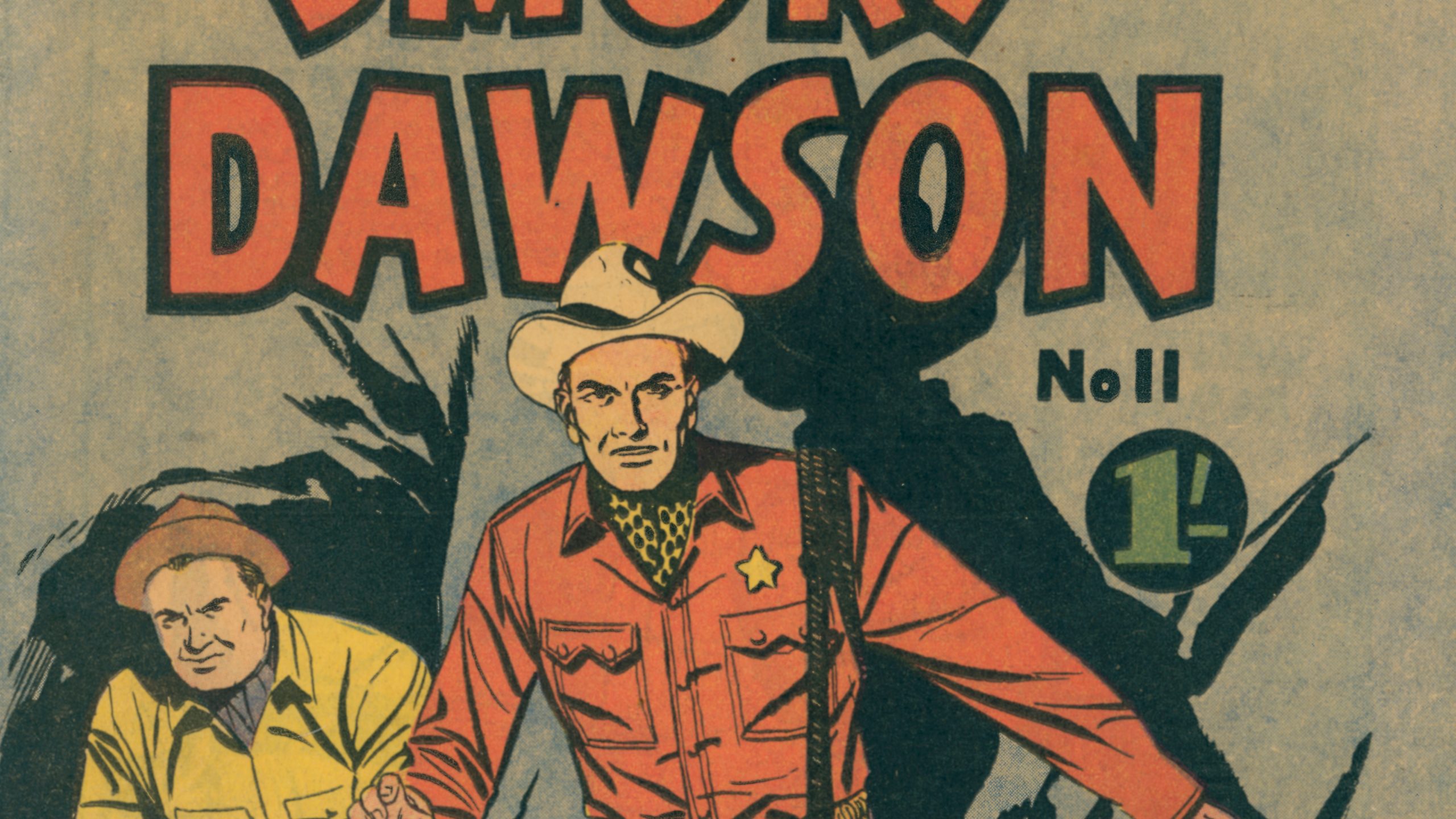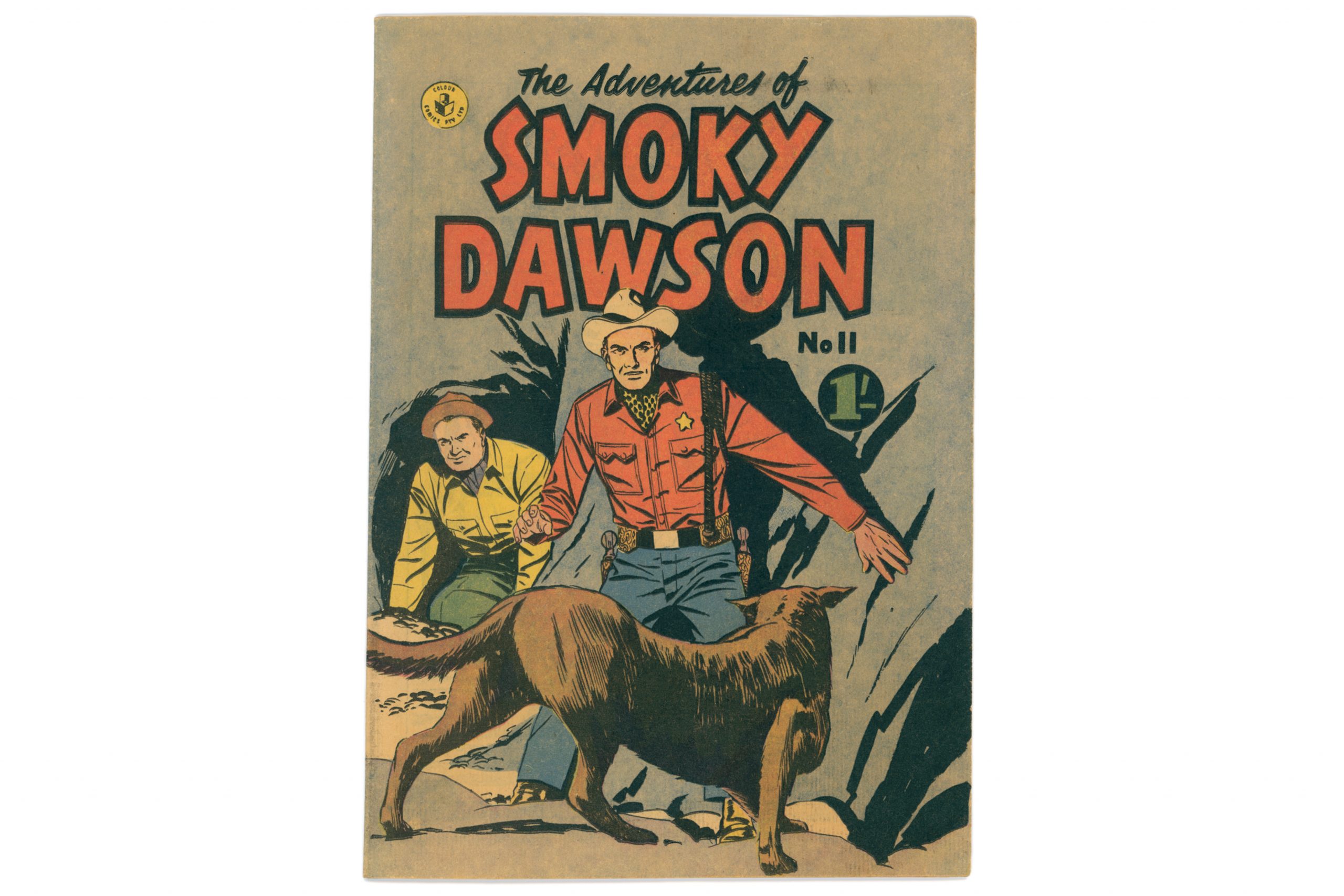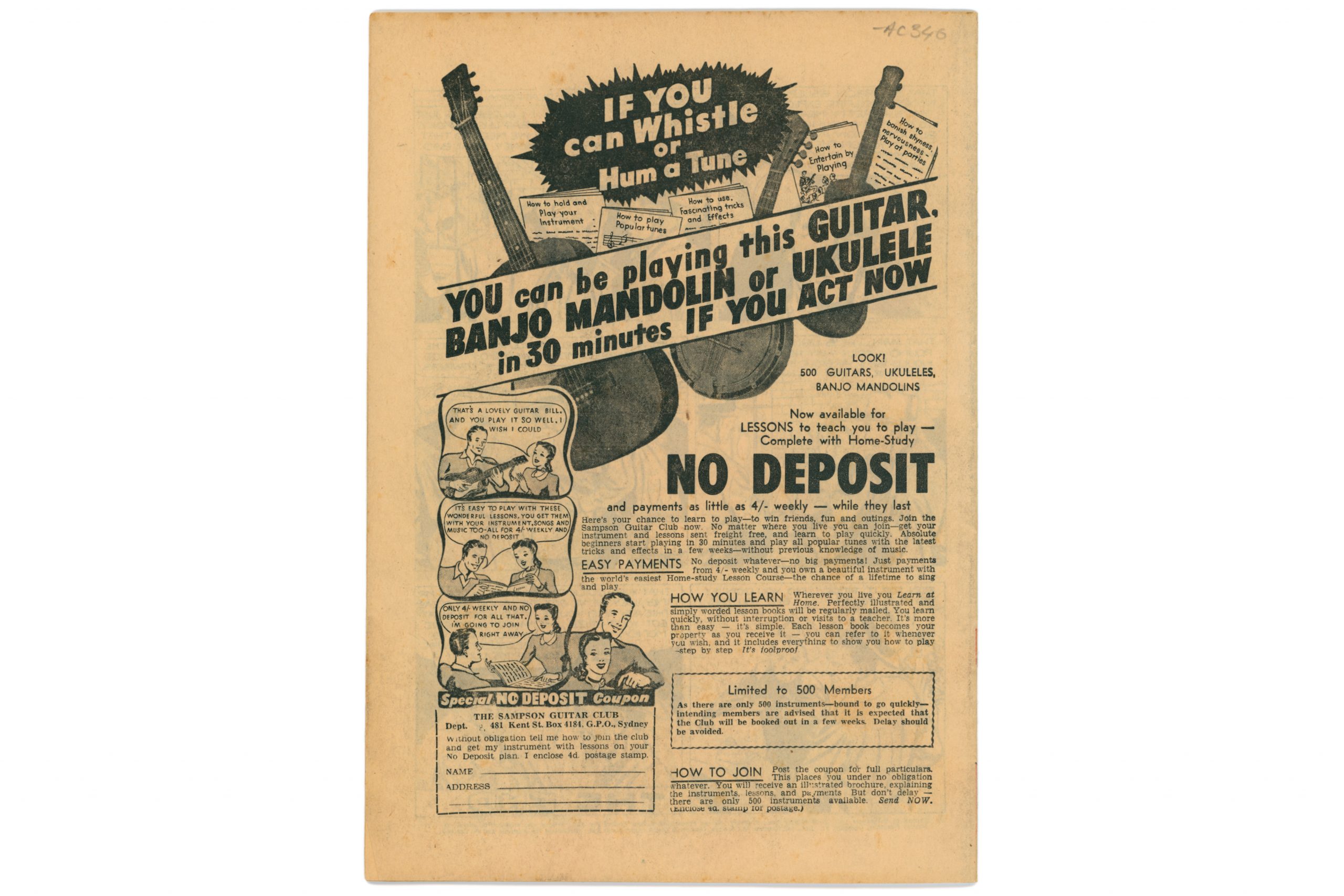Smoky Rides Again
Dawson’s Comic Adventure
Comic books started to appear during the 1930s when the increasingly popular weekly newspaper strips were collected into booklets and resold. The Second World War saw a boom in the popularity of comic books along with the moral outrage against them. Due to the war, the Australian Government enacted the National Security Act of 1939. This restricted a number of items that could be imported into Australia. Paper, particularly newsprint, was one of them.
With wartime paper supplies restricted, American comics were in short supply. Australian publishers, writers and graphic artists had a window of opportunity to satisfy the market by creating many popular Australian comic book titles. After the war, the moral outrage against comic books along with Australia’s embracing of censorship, continued the restrictions on American imports.
This Smoky Dawson comic comes from this period and is the final issue in the series. Beginning in 1952 as a strip cartoon that ran until 1962 in Australian newspapers, a number of the strips were collected into eleven issues that were published from June 1957 through to April 1958. Written and crafted in Australia and based on Smoky Dawson’s Kellog’s Corn Flakes sponsored radio adventure serials broadcast on the Macquarie radio network, unlike some other adventure comics that were Australianised American content, the Smoky Dawson comics were written and drawn in Sydney. A few Americanisations still slipped in; Smoky wears a Sherriff’s star badge while the dog looks more wolf than dingo.
Like fellow country musician Tex Morton who also had a comic series based on him, Smoky Dawson’s adventures presented heroic stories from the Australian outback, fostering images of the Australian ‘bushman’, able to ride a horse, was skilled in bushcraft, and able to defend himself if needed. These visions of Australian masculinity are seen in the pages of this comic too where Smoky Dawson and his beloved (horse) Flash would arrive at a town, solve a problem, and ride off again into the sunset with a song.
Sadly, in the 1960s the rise of television, and the flood of American popular culture, proved to be the one foe Smoky Dawson’s comic character couldn’t defeat.






